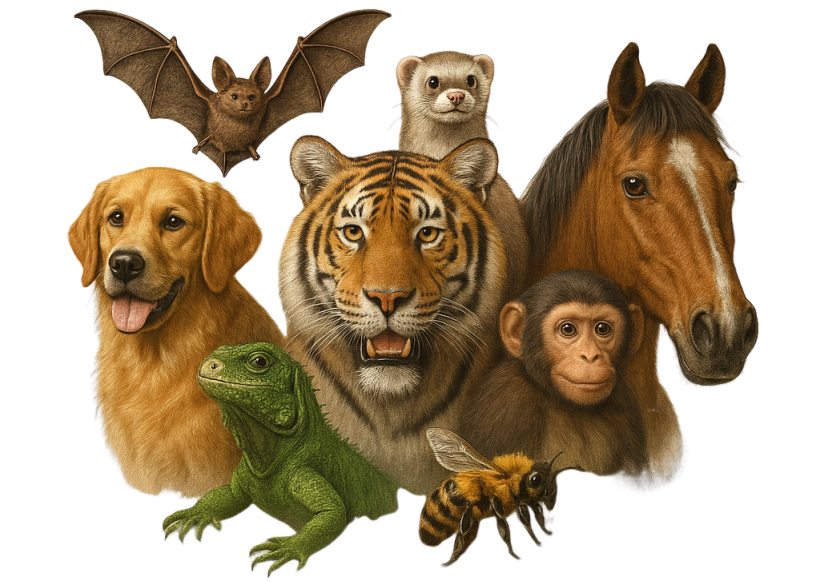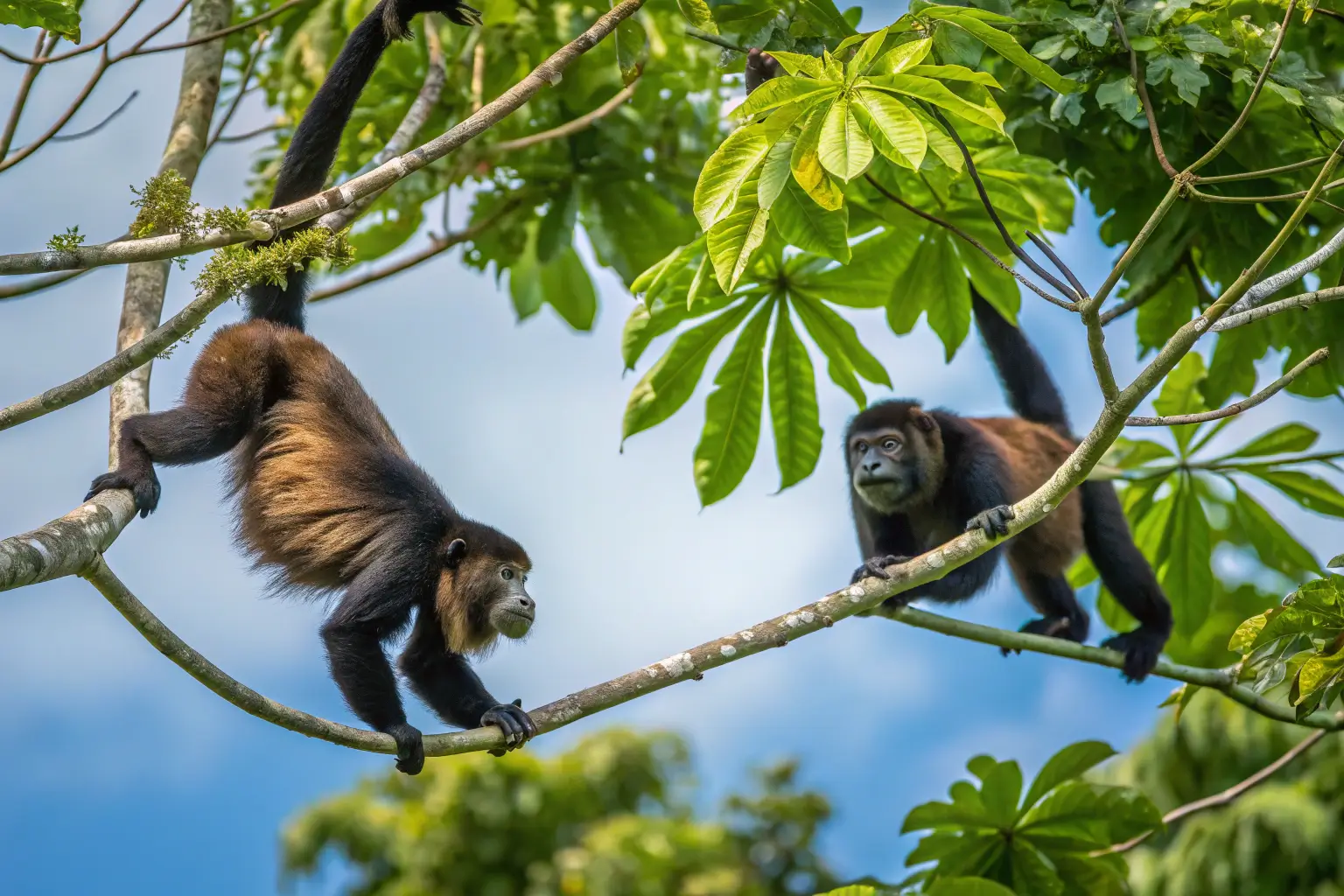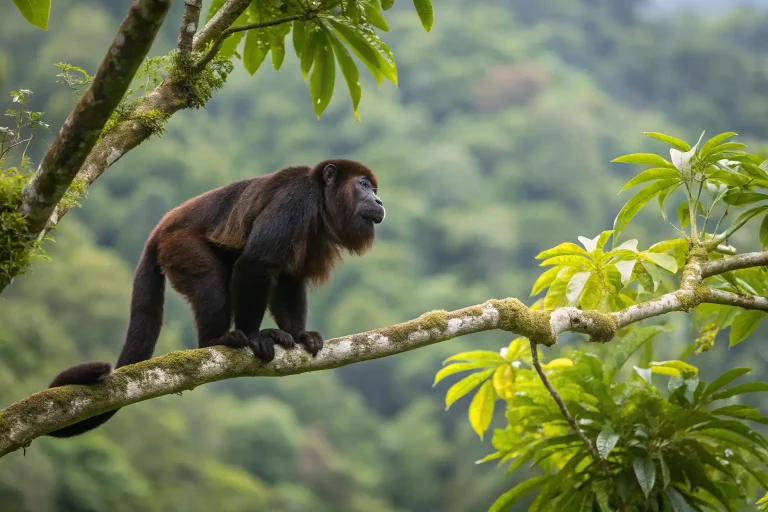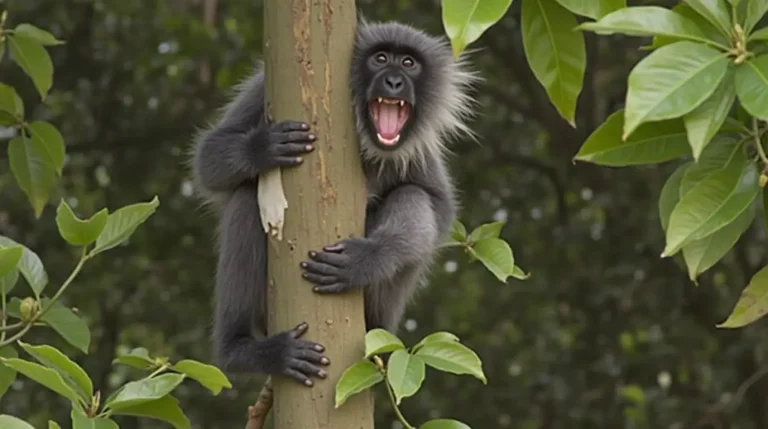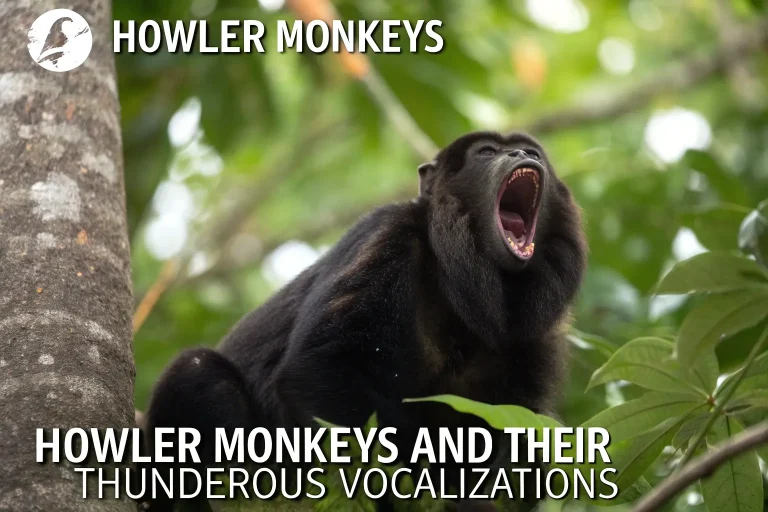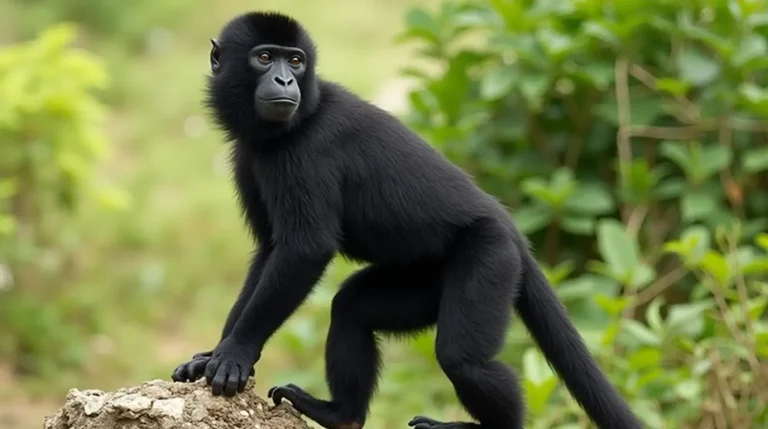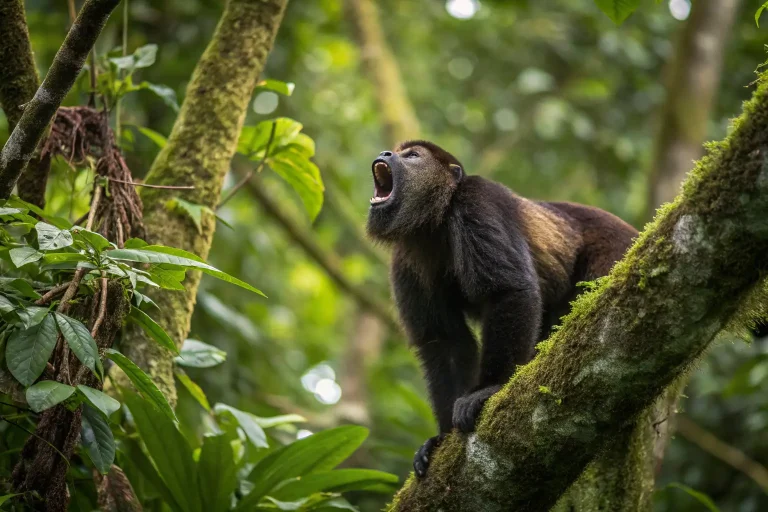Howler Monkeys Costa Rica: 7 Fascinating Facts You’ll Love
Introduction
The dense rainforests of Costa Rica reverberate with sounds that can travel up to three miles through the jungle—the unmistakable roars of howler monkeys. These remarkable primates aren’t just Costa Rica’s loudest inhabitants; they’re among the most fascinating creatures you’ll encounter during any tropical adventure. As the sun rises over Costa Rica’s lush canopies, the haunting calls of howler monkeys Costa Rica natives call “congos” announce the day’s beginning, creating an authentic jungle soundtrack unlike anything else on Earth.
Whether you’re planning your first trip to this biodiversity hotspot or simply curious about tropical wildlife, understanding these vocal ambassadors of the rainforest offers a window into Costa Rica’s complex ecosystem. These remarkable creatures have adapted ingeniously to their environment and play critical roles in maintaining the health of Central America’s precious forests.
Did you know that despite their fearsome roars—which rank among the loudest of any land animal—these monkeys typically weigh just 15 pounds? This incredible sound-to-size ratio is just one of the many surprising aspects of howler monkeys that make them worth getting to know better.
Species Overview
Scientific Name: Alouatta palliata
The howler monkeys found in Costa Rica primarily belong to the species Alouatta palliata, commonly known as the mantled howler monkey. They’re part of the broader Atelidae family within the order Primates. These remarkable animals represent one of the largest monkey species in Central America’s rainforests.
Physical Characteristics
Mantled howler monkeys typically weigh between 10-22 pounds (4.5-10 kg), with males generally larger than females. Their bodies stretch about 22-36 inches (56-92 cm) long, not including their impressive prehensile tails, which add another 23-36 inches (58-91 cm).
Their most distinctive feature is their dark black fur with a fringe of longer golden or brown hair along their sides—the “mantle” that gives them their common name. Their faces are bare and black, framed by a beard-like growth of fur. Most noticeably, howler monkeys Costa Rica populations feature an enlarged hyoid bone in their throats, essentially a hollow cup-shaped bone that acts as a sound amplifier, enabling their extraordinary vocalizations.
Subspecies
Within Costa Rica, you’ll primarily encounter the mantled howler (A. palliata), though regional variations exist. The A. palliata palliata subspecies dominates much of the country, while A. palliata mexicana can be found in northern regions near Nicaragua. Another species, the Guatemalan black howler (Alouatta pigra), has territories that occasionally overlap with Costa Rica’s northern border, but they’re much rarer within the country itself.
Habitat and Distribution
Natural Habitat
Howler monkeys Costa Rica populations thrive primarily in the upper canopy of tropical forests, where they spend approximately 80% of their time. They prefer mature forests with tall, connected canopy structures that allow them to travel without descending to the forest floor. These arboreal mammals particularly favor trees that produce their preferred fruits and leaves, often establishing territories around reliable food sources.
While they adapt to various forest types, from lowland rainforests to cloud forests at higher elevations, they show a particular preference for riparian forests along rivers and streams where vegetation remains lush year-round.
Geographic Range
Within Costa Rica, howler monkeys enjoy a wide distribution, appearing in nearly every forest region of the country. You’ll find them throughout:
- Guanacaste’s dry forests
- The Osa Peninsula’s rainforests
- Manuel Antonio National Park
- Corcovado National Park
- Monteverde’s cloud forests
- Tortuguero’s coastal rainforests
They range from sea level up to approximately 2,500 meters (8,200 feet) in elevation, though they’re most commonly encountered below 1,500 meters. Costa Rica serves as part of their broader geographic range, which extends from southern Mexico through Central America and into parts of Colombia and Ecuador.
Adaptations
Evolution has equipped howler monkeys Costa Rica inhabitants with remarkable adaptations for their arboreal lifestyle:
- Their prehensile tails function as a “fifth limb,” allowing them to hang securely while feeding or even sleeping.
- Specialized digestive systems enable them to process tough, fibrous leaves that other primates can’t efficiently digest.
- Their hands and feet feature strong, curved fingers and opposable thumbs ideal for grasping branches.
- Dark coloration provides camouflage in the shadowy forest canopy.
- Their enlarged hyoid bones create a resonance chamber that amplifies their calls, allowing them to communicate across vast forest territories without expending energy on physical movement.
Perhaps most remarkably, they’ve developed a form of energy conservation—remaining inactive for up to 80% of their day—which helps them survive on a leaf-heavy diet that provides relatively little caloric energy compared to fruit or meat.
Diet and Feeding Habits
What They Eat
Howler monkeys Costa Rica populations maintain a primarily folivorous (leaf-eating) diet, though with significant seasonal variations. Their typical diet consists of:
- Young leaves (55-70% of diet)
- Mature leaves (when young leaves aren’t available)
- Fruits (15-30% of diet, increasing during fruit-abundant seasons)
- Flowers (5-10%)
- Occasional stems, buds, and seeds
This flexibility allows them to adapt to seasonal changes in food availability. During the dry season (December-April), when fruits are scarcer in many Costa Rican forests, howlers rely more heavily on leaves. When the rainy season brings fruit abundance, they adjust accordingly, consuming more energy-rich foods.
Foraging Behavior
Howler monkeys typically feed in the early morning and late afternoon, avoiding the intense midday heat. Their feeding strategy involves:
- Moving slowly through their territory in small groups
- Targeting young, protein-rich leaves before they develop tough fibers and chemical defenses
- Selecting fruits based on ripeness and nutritional content
- Remaining within a relatively small home range (5-45 acres) to minimize energy expenditure
Unlike some more agile monkey species, howlers move deliberately, spending an average of 4-5 hours daily feeding and the remainder resting to digest their fibrous meals. This energy-conservation strategy proves crucial to their survival.
Dietary Needs
The specialized digestive system of howler monkeys Costa Rica inhabitants includes:
- An enlarged cecum (part of the large intestine) where beneficial bacteria ferment fibrous plant matter
- A longer intestinal transit time than fruit-eating primates
- The ability to detoxify certain plant compounds that would poison other animals
These adaptations allow them to extract sufficient protein and nutrients from their leaf-heavy diet. However, they still face nutritional challenges, particularly regarding protein intake, which influences their food selection process. They carefully choose leaves with higher protein content and lower levels of toxic compounds when possible.
Behavior and Social Structure
Social Behavior
Howler monkeys Costa Rica groups typically maintain relatively small social units compared to some primate species, ranging from 10-20 individuals. These groups include:
- 1-3 adult males
- Several adult females (typically 5-10)
- Their dependent offspring
Their social hierarchy tends to be more relaxed than in many other primates, though adult males establish dominance relationships. Females typically remain in their birth groups (philopatric), while males disperse to join new groups upon reaching sexual maturity, reducing the risk of inbreeding.
Daily activities follow consistent patterns:
- Dawn: Morning chorus of howling
- Early morning: First feeding session
- Midday: Rest and digestion
- Late afternoon: Second feeding session
- Evening: Movement to sleeping trees and social grooming
- Night: Sleep in tight groups for safety and warmth
Communication
The vocalizations of howler monkeys Costa Rica populations represent their most distinctive behavioral trait. Their roars serve multiple purposes:
- Territorial announcement and defense
- Group coordination during movement
- Warning of potential predators
- Mate attraction and competition
Beyond their famous howls, they communicate through:
- Subtle facial expressions
- Body postures
- Scent marking (particularly males)
- Tactile communication, including grooming and play
Interestingly, howlers’ vocalization patterns vary by region within Costa Rica, with some populations howling more frequently at dawn, while others vocalize more throughout the day, creating local “dialects.”
Mating and Reproduction
Howler monkeys don’t follow strict breeding seasons in Costa Rica’s relatively stable climate. Females typically give birth every 1-2 years after a gestation period of approximately 6 months. Reproductive characteristics include:
- Infants born with pale fur that darkens with age
- Single births (twins are extremely rare)
- Infant carrying by mothers for 4-6 months
- Weaning around 12-15 months
- Sexual maturity at 3-4 years for females, 4-6 years for males
- Lifespan of 15-20 years in the wild
During infant development, young howlers gradually gain independence but remain within the protection of the group. Juvenile males eventually leave their birth groups, sometimes forming bachelor groups before attempting to join established groups with females.
Conservation Status
Endangerment Level
According to the International Union for Conservation of Nature (IUCN), mantled howler monkeys (Alouatta palliata) are classified as “Vulnerable.” While not yet facing immediate extinction risk, their populations show troubling declines throughout much of Central America, including parts of Costa Rica.
Costa Rica’s howler monkey populations face varying degrees of threat depending on location, with those in protected areas maintaining relatively stable numbers, while those in developing regions experiencing more significant pressures.
Threats
Howler monkeys Costa Rica populations face several critical threats:
Habitat Loss and Fragmentation: Despite Costa Rica’s impressive conservation record (protecting approximately 25% of its land), ongoing deforestation for agriculture, livestock, and development continues to reduce and fragment howler habitat. Since they rarely descend to the ground, fragmented forests can create isolated populations unable to maintain genetic diversity.
Road Development: Expanding infrastructure leads to frequent roadkill incidents as howlers attempt to cross gaps in the canopy by traversing roads.
Electrocution: Contact with uninsulated power lines causes numerous howler deaths annually, especially in developing coastal areas.
Climate Change: Shifting temperature and rainfall patterns affect flowering and fruiting cycles, potentially disrupting food availability.
Disease: Emerging diseases, including some transmitted from humans, pose increasing threats to vulnerable populations.
Pet Trade: Though less common than in previous decades, illegal capture for the pet trade still occurs in some regions.
Conservation Efforts
Several notable initiatives help protect howler monkeys Costa Rica populations:
Wildlife Bridge Program: Organizations like Mono Tití have installed dozens of rope bridges over highways, allowing safe canopy crossings for arboreal mammals.
Electric Company Partnerships: Conservation groups work with utilities to install insulated power lines in critical wildlife corridors.
Protected Area Expansion: Costa Rica continues expanding its protected area network, with recent additions focusing on creating biological corridors.
Reforestation Projects: Community-based initiatives restore forest connectivity between fragmented habitats.
Ecotourism Development: Sustainable wildlife tourism generates economic incentives for protecting howler habitat.
Education Programs: Schools near howler habitats receive educational materials about monkey conservation and coexistence.
Organizations like Saving Monkeys Foundation, Kids Saving the Rainforest, and The Sloth Institute actively rehabilitate injured howlers and conduct ongoing research to improve conservation strategies.
7 Interesting Facts
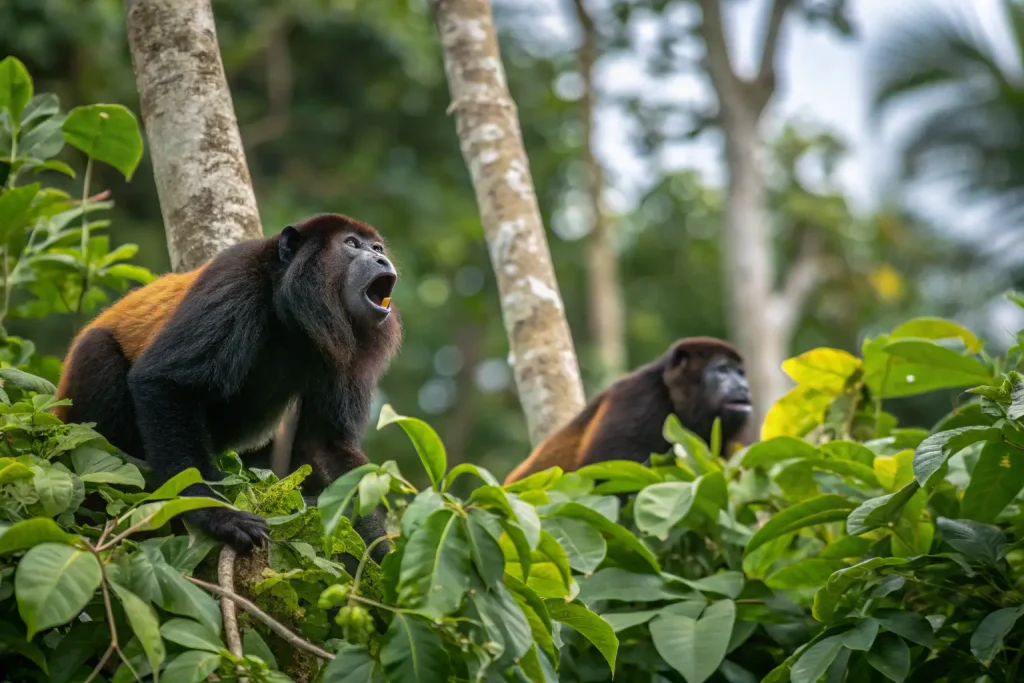
1. Loudest Land Mammals on Earth
Howler monkeys Costa Rica residents can produce calls reaching an astonishing 140 decibels—louder than a rock concert (115 dB) and approaching the threshold of pain for human ears. This incredible volume comes from their specialized hyoid bone, which creates a resonance chamber in their throats. Their calls can travel up to three miles through dense jungle, making them the undisputed vocal champions of the animal kingdom.
2. Natural Barometers
Local Costa Ricans have long used howler monkey vocalizations as weather predictors. Increased howling often precedes incoming storms, potentially because the monkeys sense dropping barometric pressure. This behavior has earned them a place in local weather folklore, with many guides and farmers still relying on “monkey weather forecasts.”
3. Remarkable Sleep Patterns
Unlike many mammals, howlers experience REM sleep patterns similar to humans, complete with vivid dreams. Researchers have observed rapid eye movements, muscle twitches, and even vocalizations during sleep that suggest these monkeys likely dream. They typically sleep 15+ hours daily, making them among the most sleep-dependent mammals on the planet.
4. Color-Changing Babies
All baby howler monkeys in Costa Rica are born with distinctive silver-gold fur regardless of their eventual adult coloration. This striking difference from their dark-furred parents may help signal their infant status to other group members, potentially reducing aggression and encouraging protection from the entire group.
5. Ecosystem Engineers
A single howler monkey can disperse over 800,000 seeds annually through their droppings. Their preference for ripe fruit makes them perfect seed dispersers, as seeds pass through their digestive systems intact and emerge with a natural fertilizer coating. Many Costa Rican tree species have evolved fruits specifically attractive to these efficient forest regenerators.
6. Remarkable Adaptability to Cold
Unlike most tropical primates, howler monkeys have developed remarkable cold-tolerance, allowing them to inhabit Costa Rica’s cloud forests where temperatures can drop below 50°F (10°C). They manage this through behavioral adaptations like huddling, sun-bathing, and positioning themselves to catch morning sunlight.
7. Ancient Cultural Significance
Howler monkeys held significant importance in pre-Columbian Costa Rican cultures. Archaeological evidence from the Guanacaste region shows howler imagery in pottery and ceremonial objects dating back 2,000+ years. Their distinctive calls were associated with thunder gods, and their dark coloration connected them with rain clouds in indigenous cosmology.
Tips for Observing Howler Monkeys in Costa Rica
Best Viewing Locations
For wildlife enthusiasts hoping to observe howler monkeys Costa Rica offers numerous excellent viewing opportunities:
- Manuel Antonio National Park: Features habituated troops often visible from main trails
- Corcovado National Park: Hosts high-density populations in pristine habitat
- Monteverde Cloud Forest Preserve: Offers opportunities to see them in unique montane environments
- Tortuguero National Park: Provides boat-based viewing along canals
- Guanacaste Conservation Area: Features dry forest adaptations
Viewing Tips
For the best experience observing these remarkable primates:
- Time Your Visit: Early morning (5:30-8:00 AM) offers peak activity periods when howlers are feeding and vocalizing.
- Hire Local Guides: Experienced guides dramatically increase sighting opportunities through their knowledge of territories and behaviors.
- Be Patient: Howlers move slowly and may remain still for extended periods.
- Listen Carefully: Their distinctive calls often reveal their location before visual confirmation.
- Bring Binoculars: 8×42 or 10×42 binoculars provide ideal magnification for canopy viewing.
- Pack Rain Protection: Sudden downpours are common in howler habitat.
- Respect Boundaries: Maintain at least 10 meters distance to avoid stressing the animals.
Photography Tips
Capturing memorable images of howler monkeys Costa Rica environments present unique challenges:
- Use a lens with at least 200mm focal length for detailed shots
- Increase ISO in the dim forest understory
- Practice quick focusing techniques for fleeting opportunities
- Look for backlighting opportunities that highlight their distinctive silhouettes
- Be prepared to shoot upward at steep angles
- Consider using burst mode for capturing behaviors
- Pack lens protection for humid conditions
Role in the Ecosystem
Ecological Importance
Howler monkeys Costa Rica populations serve several vital ecological functions:
Primary Seed Dispersers: Their fruit consumption and subsequent seed dispersal proves essential for forest regeneration. Unlike some primates that destroy seeds during feeding, howlers swallow fruits whole, transporting seeds far from parent trees. This dispersal reduces seedling competition and pathogen exposure while extending plant species’ ranges.
Vegetation Management: Their selective feeding on leaves, buds, and flowers helps control plant growth patterns. This natural pruning stimulates new growth and enhances forest productivity.
Food Source: Howlers provide essential nutrition for predators like harpy eagles, jaguars, and boa constrictors, helping maintain these predator populations.
Indicator Species: As canopy specialists sensitive to fragmentation, howler population health serves as a reliable indicator of overall forest ecosystem integrity.
Impact of Decline
A significant decline in howler monkey populations would trigger several ecological consequences:
Reduced Tree Diversity: Without efficient seed dispersal, many tree species would face reproductive challenges, potentially reducing forest diversity over time.
Changed Forest Structure: Trees evolved to depend on primate seed dispersal might decline, altering canopy composition and density.
Cascade Effects: Reduced howler populations would impact their predators, potentially triggering trophic cascades affecting multiple species.
Altered Plant Chemistry: With reduced browsing pressure, some plant species might allocate fewer resources to chemical defenses, changing their growth patterns and nutritional profiles.
Lost Ecotourism Value: Beyond ecological impacts, howlers represent significant ecotourism draw for Costa Rica’s economy, with potential economic repercussions from population declines.
Conclusion
Howler monkeys Costa Rica populations represent far more than just an iconic sound of the rainforest—they’re complex, fascinating creatures that have evolved remarkable adaptations to their tropical homeland. From their unparalleled vocalizations to their critical role as seed dispersers, these primates exemplify the interconnectedness of rainforest ecosystems.
As we’ve explored, these monkeys face growing challenges from habitat fragmentation, climate change, and human development. Their future depends largely on continued conservation efforts, sustainable tourism practices, and public awareness of their ecological importance.
Whether you’re planning a wildlife adventure to see these remarkable creatures firsthand or simply appreciate learning about Costa Rica’s biodiversity from afar, understanding howler monkeys enhances our connection to these precious ecosystems. Consider supporting organizations working to protect howler habitats or choosing eco-friendly travel options if you visit their rainforest homes.
By protecting the habitats that sustain howler monkeys, we simultaneously preserve countless other species and the vital ecological processes that make Costa Rica one of Earth’s biodiversity hotspots. After all, a forest that echoes with the powerful calls of healthy howler populations is a forest functioning as nature intended.
Frequently Asked Questions
Are howler monkeys dangerous to humans?
No, howler monkeys are not dangerous to humans. Despite their intimidating roars, they’re actually quite shy and avoid human contact whenever possible. They’re herbivores with no interest in attacking people. However, like all wild animals, they should be observed from a respectful distance without attempts to touch or feed them.
What’s the best time of year to see howler monkeys in Costa Rica?
Howler monkeys can be observed year-round in Costa Rica. The dry season (December to April) generally offers better viewing conditions with clearer skies and less foliage coverage, making them easier to spot in trees. However, the rainy season (May to November) coincides with many fruiting trees, potentially increasing feeding activity.
How can I tell the difference between howler monkeys and other Costa Rican monkeys?
Howler monkeys Costa Rica populations are distinguished by their black fur, bearded appearance, and much larger size compared to the white-faced capuchin or squirrel monkey. They move slowly and deliberately (unlike the acrobatic spider monkeys), and of course, their distinctive loud roars are unmistakable once heard.
Why do howler monkeys roar so loudly?
Howler monkeys roar primarily to communicate with other troops about territory boundaries, saving energy they would otherwise spend on physical confrontations. The calls also help maintain group cohesion, announce male status within groups, and potentially warn about predators. Their specialized throat anatomy amplifies these calls to extraordinary volumes.
Are howler monkeys endangered in Costa Rica?
Mantled howler monkeys are classified as “Vulnerable” by the IUCN, indicating conservation concern without immediate extinction risk. While Costa Rica’s extensive protected areas provide significant habitat, populations outside these areas face pressure from development, road mortality, and electrocution on power lines. Their status varies significantly by region within the country.
What should I do if I find an injured howler monkey in Costa Rica?
If you encounter an injured howler monkey, do not attempt to handle it yourself. Contact local authorities like MINAE (Ministry of Environment and Energy) at 1192 or reach out to wildlife rescue organizations like Kids Saving the Rainforest or Alturas Wildlife Sanctuary. Document the location precisely and, if possible, stay at a distance to help rescuers locate the animal.
Do howler monkeys make good pets?
Absolutely not. Howler monkeys are wild animals with complex social, dietary, and habitat needs impossible to meet in captivity. Additionally, keeping them as pets is illegal in Costa Rica and most countries. They typically become aggressive as they mature and suffer severe psychological damage when removed from their natural social groups. Appreciate these magnificent creatures in their natural habitat instead.
